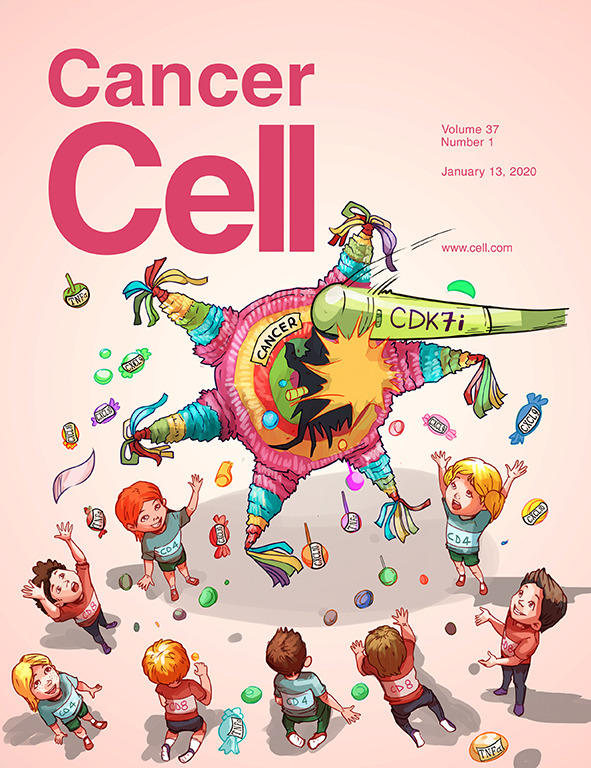Stromal lipid species dictate melanoma metastasis and tropism
IF 44.5
1区 医学
Q1 CELL BIOLOGY
引用次数: 0
Abstract
Cancer cells adapt to signals in the tumor microenvironment (TME), but the TME cues that impact metastasis and tropism are still incompletely understood. We show that abundant stromal lipids from young subcutaneous adipocytes, including phosphatidylcholines, are taken up by melanoma cells, where they upregulate melanoma PI3K-AKT signaling, fatty acid oxidation, oxidative phosphorylation (OXPHOS) leading to oxidative stress, resulting in decreased metastatic burden. High OXPHOS melanoma cells predominantly seed the lung and brain; decreasing oxidative stress with antioxidants shifts tropism from the lung to the liver. By contrast, the aged TME provides fewer total lipids but is rich in ceramides, leading to lower OXPHOS and high metastatic burden. Aged TME ceramides taken up by melanoma cells activate the S1P-STAT3-IL-6 signaling axis and promote liver tropism. Inhibiting OXPHOS in the young TME or blocking the IL-6 receptor in the aged TME reduces the age-specific patterns of metastasis imposed by lipid availability.

基质脂质种类决定黑色素瘤的转移和趋向性
癌细胞适应肿瘤微环境(TME)中的信号,但影响转移和趋向性的TME信号仍不完全清楚。我们发现来自年轻皮下脂肪细胞的丰富基质脂质,包括磷脂酰胆碱,被黑色素瘤细胞吸收,在那里它们上调黑色素瘤PI3K-AKT信号,脂肪酸氧化,氧化磷酸化(OXPHOS)导致氧化应激,导致转移负担减轻。高OXPHOS黑色素瘤细胞主要分布于肺和脑;用抗氧化剂减少氧化应激,使嗜性从肺转移到肝。相比之下,老年TME提供的总脂质较少,但神经酰胺丰富,导致OXPHOS降低和高转移负担。黑色素瘤细胞摄取老化的TME神经酰胺,激活S1P-STAT3-IL-6信号轴,促进肝向性。在年轻TME中抑制OXPHOS或在老年TME中阻断IL-6受体可降低脂质可用性施加的年龄特异性转移模式。
本文章由计算机程序翻译,如有差异,请以英文原文为准。
求助全文
约1分钟内获得全文
求助全文
来源期刊

Cancer Cell
医学-肿瘤学
CiteScore
55.20
自引率
1.20%
发文量
179
审稿时长
4-8 weeks
期刊介绍:
Cancer Cell is a journal that focuses on promoting major advances in cancer research and oncology. The primary criteria for considering manuscripts are as follows:
Major advances: Manuscripts should provide significant advancements in answering important questions related to naturally occurring cancers.
Translational research: The journal welcomes translational research, which involves the application of basic scientific findings to human health and clinical practice.
Clinical investigations: Cancer Cell is interested in publishing clinical investigations that contribute to establishing new paradigms in the treatment, diagnosis, or prevention of cancers.
Insights into cancer biology: The journal values clinical investigations that provide important insights into cancer biology beyond what has been revealed by preclinical studies.
Mechanism-based proof-of-principle studies: Cancer Cell encourages the publication of mechanism-based proof-of-principle clinical studies, which demonstrate the feasibility of a specific therapeutic approach or diagnostic test.
 求助内容:
求助内容: 应助结果提醒方式:
应助结果提醒方式:


